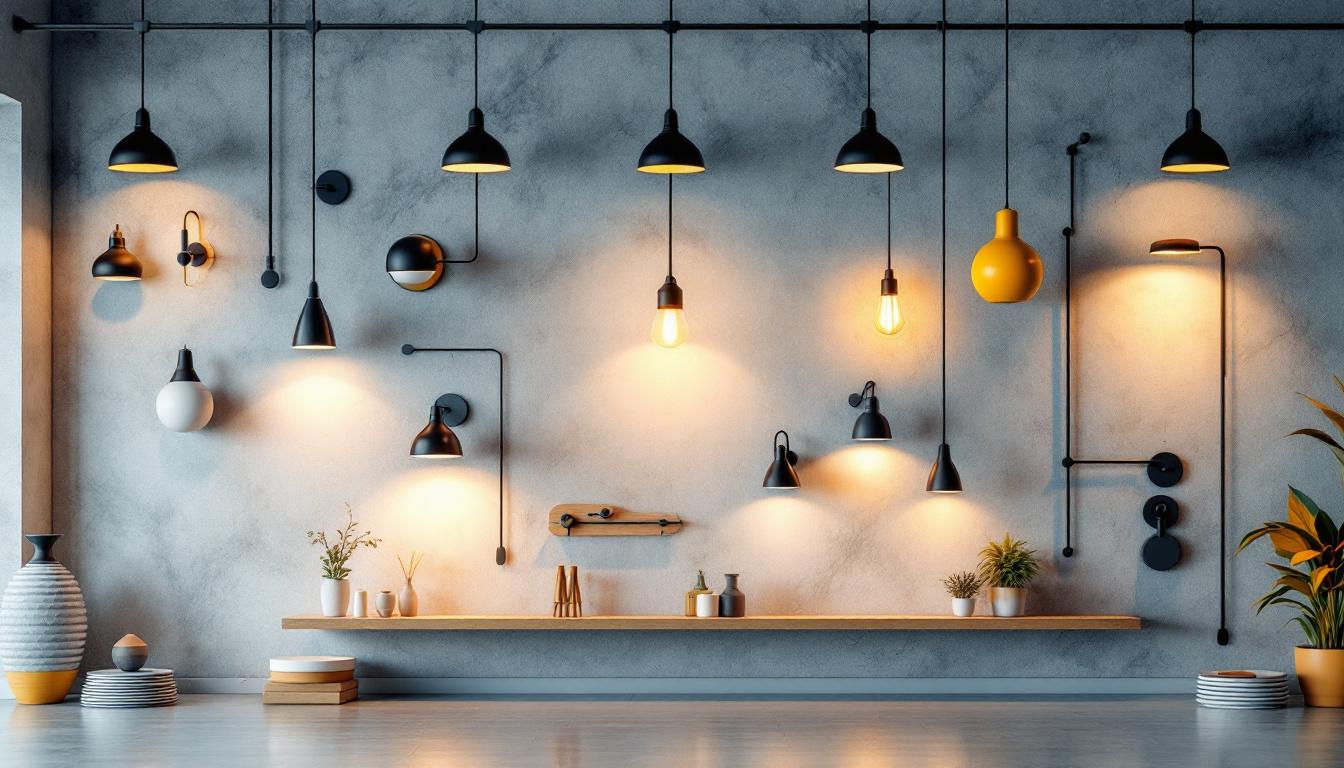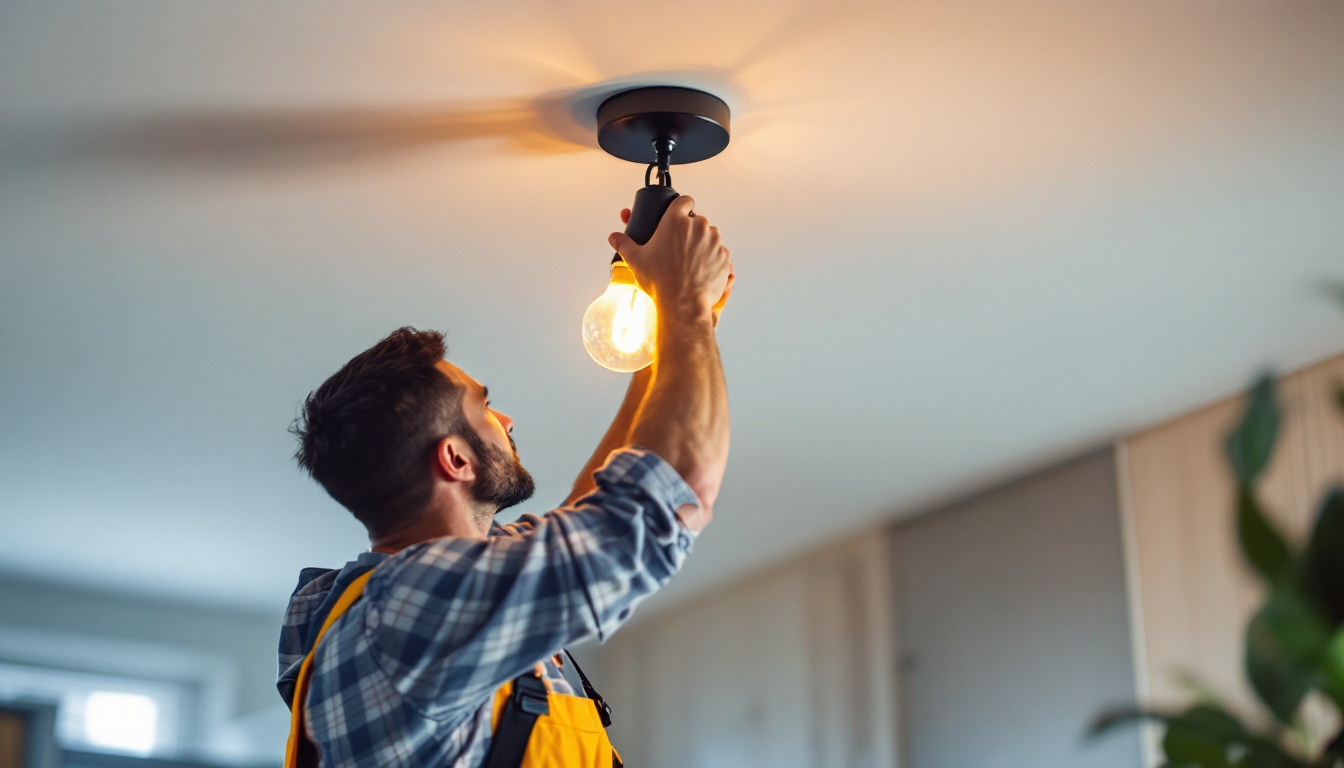
Lighting contractors play a crucial role in the construction and renovation industries, providing essential services that enhance the functionality and aesthetics of spaces. Among the tools and equipment they rely on, LED lights have become increasingly popular due to their energy efficiency, longevity, and versatility. This article delves into the essentials surrounding 12-inch LED lights, offering insights that can aid lighting contractors in making informed choices for their projects.
LED lighting has revolutionized the way spaces are illuminated. Unlike traditional incandescent or fluorescent lights, LEDs offer a range of benefits that make them the preferred choice for many contractors. Their energy efficiency not only reduces electricity bills but also minimizes the environmental impact of lighting solutions.
Moreover, LED lights have a significantly longer lifespan, often lasting up to 25,000 hours or more. This longevity translates to reduced maintenance costs and less frequent replacements, allowing contractors to focus on other aspects of their projects. Additionally, the compact size of LED fixtures, such as the 12-inch models, provides flexibility in design and installation.
One of the most compelling reasons to choose LED lighting is its energy efficiency. LEDs consume significantly less power than traditional lighting options, which can lead to substantial savings over time. For contractors working on large-scale projects, these savings can accumulate quickly, making LED lights a financially sound investment.
Furthermore, many regions offer incentives for using energy-efficient lighting, which can further offset initial costs. Understanding local regulations and available rebates can provide contractors with additional financial benefits when opting for LED solutions. Additionally, the reduced heat output of LEDs means that air conditioning systems do not have to work as hard to maintain comfortable temperatures, leading to further energy savings during warmer months.
The versatility of 12-inch LED lights allows contractors to use them in various applications. Whether it’s for residential, commercial, or industrial projects, these lights can be integrated seamlessly into different environments. Their sleek design makes them suitable for both modern and traditional settings.
Contractors can choose from a variety of styles, colors, and brightness levels, enabling them to tailor lighting solutions to meet specific client needs. This adaptability not only enhances the aesthetic appeal of a space but also improves functionality, ensuring that areas are well-lit and inviting. For instance, in a retail environment, adjustable LED lights can highlight products effectively, creating an engaging shopping experience. In contrast, softer LED options can be utilized in residential settings to create a cozy atmosphere, demonstrating how versatile these lighting solutions truly are.
Moreover, advancements in LED technology have led to the development of smart lighting systems that can be controlled remotely or programmed to adjust based on the time of day. This feature not only adds convenience but also allows for dynamic lighting scenarios that can enhance mood and productivity in various settings. As contractors increasingly embrace these innovations, the potential for customized lighting solutions continues to expand, offering clients even more reasons to choose LED options for their projects.
When selecting 12-inch LED lights, contractors must consider several factors to ensure they choose the best option for their projects. From brightness levels to color temperature, each aspect plays a vital role in the overall effectiveness of the lighting solution.
Understanding the specific requirements of a project is essential. For instance, a well-lit workspace may require brighter lights, while a cozy living area might benefit from softer illumination. By assessing the needs of the space, contractors can make informed decisions that enhance both functionality and ambiance.
Brightness is typically measured in lumens, and understanding this metric is crucial for contractors. A higher lumen output indicates a brighter light, which is essential for areas that require clear visibility, such as kitchens or offices. Conversely, spaces designed for relaxation, such as bedrooms or lounges, may benefit from lower lumen outputs.
Contractors should evaluate the intended use of each space and select 12-inch LED lights that provide the appropriate brightness levels. This ensures that clients receive the desired lighting experience while optimizing energy consumption. Additionally, it’s important to consider the layout of the space; for example, an open-plan area may require multiple light fixtures to distribute brightness evenly, while a smaller room might only need a single, well-placed light.
Color temperature, measured in Kelvin (K), affects the overall mood and functionality of a space. Warmer tones (around 2700K to 3000K) create a cozy and inviting atmosphere, making them ideal for residential settings. In contrast, cooler tones (above 4000K) are often preferred in commercial environments, as they promote alertness and productivity.
Contractors should discuss color temperature preferences with clients to ensure that the chosen 12-inch LED lights align with the desired ambiance of the space. This consideration can significantly impact the overall satisfaction of the client. Moreover, the ability to adjust color temperature through smart LED options can provide added flexibility, allowing users to change the lighting according to the time of day or specific activities, such as reading or entertaining guests. Incorporating such versatile lighting solutions can elevate the functionality of a space while catering to the varied preferences of its occupants.
The installation process for 12-inch LED lights can vary based on the specific type of fixture and the environment in which they are being installed. Contractors must be well-versed in the best practices for installation to ensure safety, functionality, and aesthetic appeal.
Proper installation not only enhances the performance of the lights but also extends their lifespan. Understanding the electrical requirements and adhering to local building codes is essential for a successful installation.
Before installation, contractors should assess the existing wiring and electrical requirements of the space. Ensuring that the electrical system can handle the load of the new LED lights is crucial for safety and performance. In some cases, upgrades may be necessary to accommodate the new fixtures.
Additionally, understanding the compatibility of LED lights with dimmer switches and other controls is essential. Some LED fixtures may require specific dimmers to function correctly, and failing to account for this can lead to flickering or reduced performance. It’s also important to consider the voltage requirements; most LED lights operate on low voltage, which may necessitate the installation of a transformer if the existing system is not compatible.
12-inch LED lights can be mounted in various ways, including recessed, surface-mounted, or suspended installations. Each mounting option offers unique benefits and can be chosen based on the specific needs of the project.
Recessed lights provide a sleek, modern look and are ideal for spaces with low ceilings. Surface-mounted options are versatile and can be used in a variety of settings, while suspended fixtures can create a dramatic effect in larger spaces. Contractors should consider the overall design of the space and the desired lighting effect when selecting a mounting option. For instance, in commercial environments, suspended LED lights can enhance the ambiance while providing ample illumination for work areas, making them a popular choice in offices and retail spaces.
Moreover, the choice of mounting can also impact maintenance and accessibility. Surface-mounted fixtures are typically easier to access for bulb replacement and cleaning, while recessed lights may require ladders or scaffolding for maintenance. Therefore, it’s crucial to factor in the long-term upkeep of the lighting system when deciding on the installation method. Additionally, incorporating adjustable or directional fixtures can allow for flexibility in lighting design, enabling users to highlight specific areas or features within a room.
One of the standout features of LED lighting is its longevity. With proper care and maintenance, 12-inch LED lights can last for many years, providing consistent performance and reducing the need for frequent replacements. However, understanding maintenance practices is essential to ensure their optimal performance.
Regular inspections and cleaning can help extend the lifespan of LED fixtures. Dust and debris can accumulate on the surface of lights, reducing their brightness and efficiency. Contractors should advise clients on proper cleaning techniques and schedules to maintain their lighting systems effectively.
While LED lights are known for their durability, they are not immune to issues. Contractors should be able to identify common problems, such as flickering, dimming, or complete failure. Understanding the underlying causes of these issues can help contractors provide effective solutions.
For instance, flickering may be caused by incompatible dimmers, while dimming could indicate a power supply issue. By troubleshooting these problems, contractors can ensure that clients receive the best possible lighting experience.
As technology continues to advance, upgrading LED fixtures may become necessary to take advantage of improved efficiency and features. Contractors should stay informed about the latest developments in LED technology and be prepared to recommend upgrades to clients when appropriate.
When replacing older LED fixtures, it’s essential to consider compatibility with existing systems. Ensuring that new lights can be integrated seamlessly into the current setup will help maintain the overall performance and aesthetics of the space.
As the demand for energy-efficient and versatile lighting solutions continues to grow, the role of lighting contractors becomes increasingly vital. Understanding the essentials of 12-inch LED lights, from selection and installation to maintenance and upgrades, equips contractors with the knowledge needed to excel in their field.
By embracing LED technology and staying informed about industry trends, lighting contractors can provide exceptional service and innovative solutions to their clients. The future of lighting is bright, and those who adapt to these changes will undoubtedly thrive in the evolving landscape of the construction and renovation industries.
Ready to elevate your lighting projects with the best 12-inch LED lights on the market? Look no further than LumenWholesale, where we offer an extensive selection of top-quality, spec-grade lighting products at unbeatable wholesale prices. Say goodbye to local distributor markups and hello to superior lighting solutions that meet the highest industry standards. With LumenWholesale, bulk buying is a breeze, and with free shipping, you’re guaranteed premium lighting at the best value — without hidden fees or compromises. Enhance your lighting projects by choosing the perfect blend of quality, affordability, and convenience. Visit LumenWholesale today for Wholesale Lighting at the Best Value.

Explore the common oversights lighting contractors make when dealing with fixture walls.

Discover the key challenges lighting contractors face with outlet box covers, from installation hurdles to compliance issues.

Discover how LED lights can revolutionize your warehouse lighting installation projects.

Discover the essential guide for lighting contractors with our comprehensive handbook on ceiling light outlets.